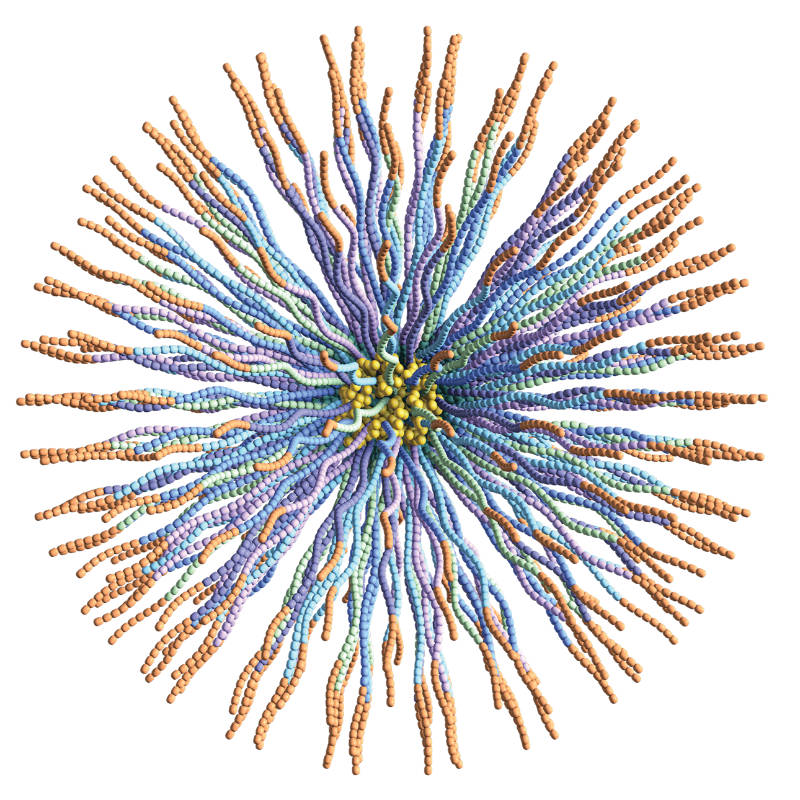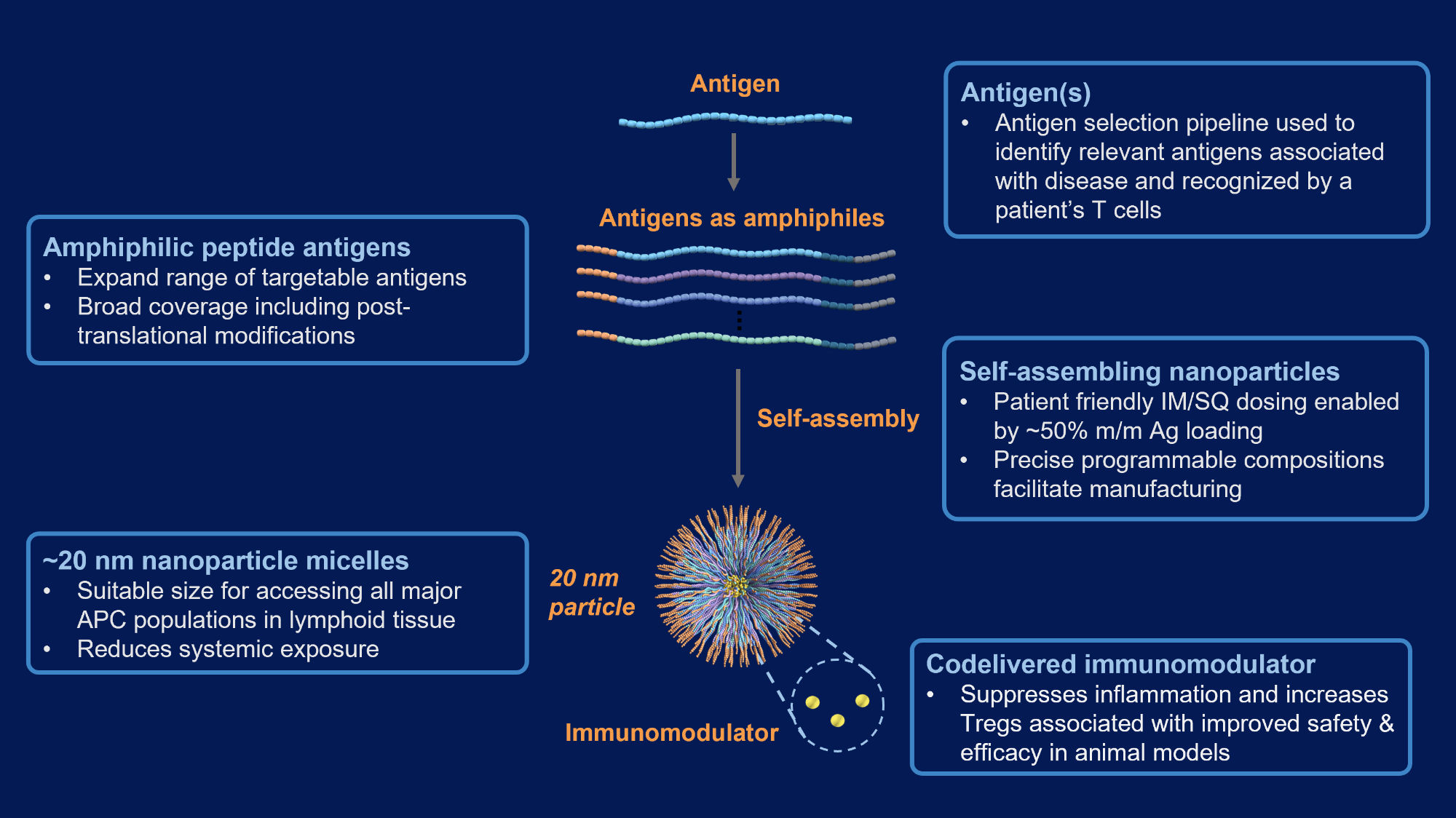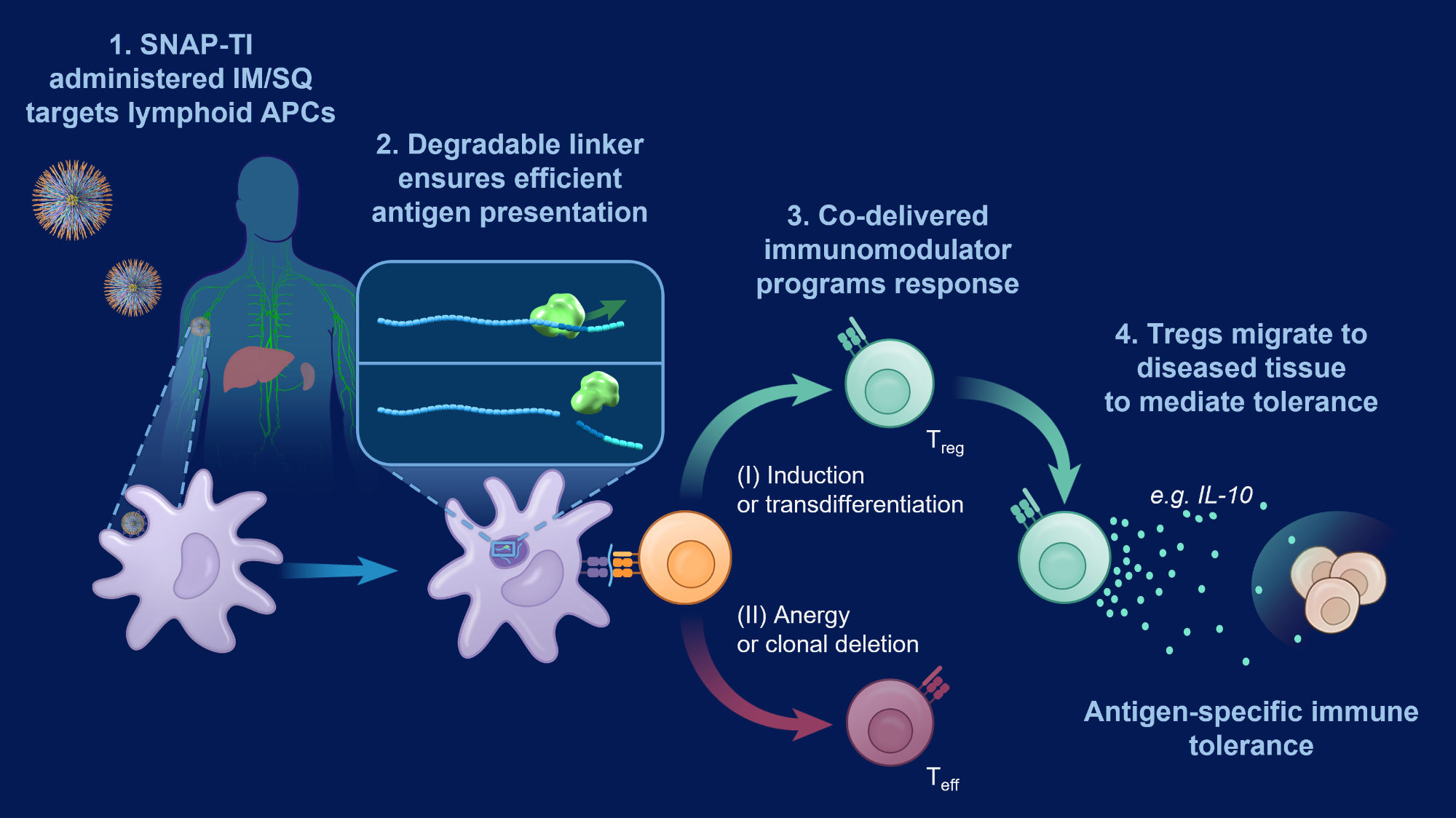SNAP-TI
SNAP Tolerance Immunotherapy (SNAP-TI)

SNAP-TI is our proprietary platform technology for promoting antigen-specific immune tolerance with a broad range of potential applications.
- SNAP-TI leverages self-assembly to co-deliver multiple antigens and an immunomodulator in nanoparticles of optimal size (20 nm) and composition for targeting all major antigen-presenting cell (APC) populations in draining lymph nodes, spleen and liver following intramuscular injection.
- Enhanced APC uptake together with co-delivered immunomodulator promote increased T regulatory (Treg)/T effector (Teff) cell ratio associated with efficacy in animal models of vitiligo, type 1 diabetes and experimental autoimmune encephalomyelitis.
- Learn more about SNAP-TI enabled product candidates:
Each component of SNAP-TI has been systematically optimized

How SNAP-TI works
The goal of treatment with SNAP-TI is to restore immune balance by delivering the disease relevant antigens in an appropriate context for promoting a reduction in Teff cells and an increase in Treg cells. To achieve this goal, disease relevant antigens are selected based on an antigen selection pipeline and then incorporated into SNAP-TI as outlined above. SNAP-TI is then administered by the preferred intramuscular (IM) or subcutaneous (SQ) routes to mediate antigen-specific immune tolerance.

- Uptake by APCs in the body – Owing to its small (20 nm) size and surface properties, SNAP-TI nanoparticles are taken up by all major APC populations (monocytes/macrophages, dendritic cells, and B cells) in lymphoid tissues following the IM route of administration as evidenced in animal studies.
- Antigen processing and presentation – SNAP-TI taken up by APCs is then broken down in a controlled manner using proprietary degradable linkers that results in antigen release for presentation to T cells.
- Immunomodulator for promoting tolerance – Antigen presented in the context of the codelivered immunomodulator is associated with an increase in Treg cells and reduction of Teff cells.
- Immune Tolerance – Treg cells guided by SNAP-TI now have the instructions needed to fight disease. After traveling to inflamed tissues and encountering antigen, Treg cells may become activated and suppress any ongoing inflammation that otherwise causes tissue damage and symptoms experienced by patients.
